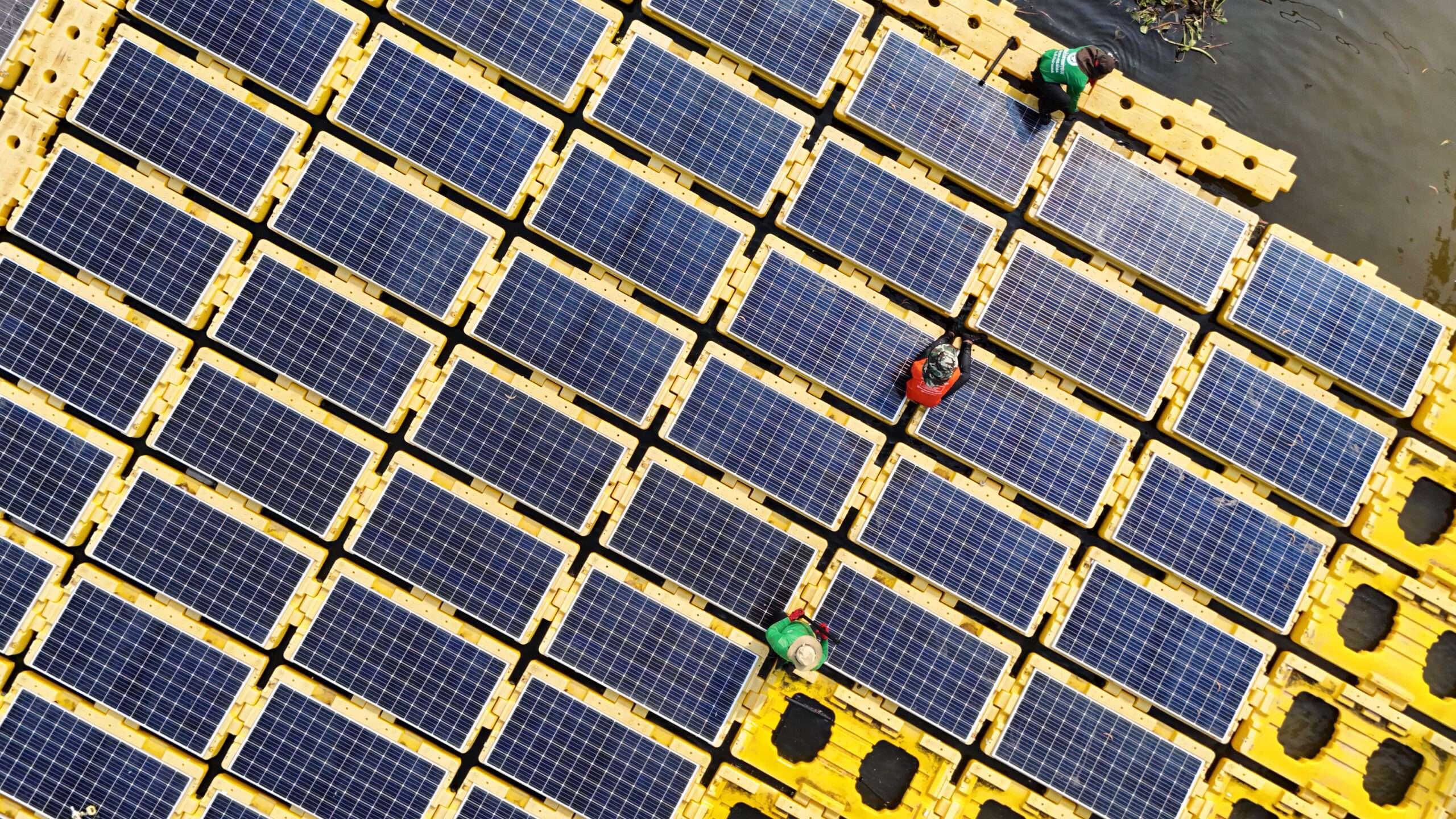The Inflation Reduction Act (IRA) passed by Congress last year promises to offer the solar energy manufacturing industry over $100 billion in tax credits over the next ten years. It has already led to numerous announcements of new solar manufacturing facilities from coast to coast, some of which are already under construction.
While IRA may be law, the Biden administration still has an important role to play in enforcing U.S. trade law and ensuring that Congress’s intent behind the IRA boosting domestic solar manufacturing is fulfilled. Specifically, the Biden administration’s final rules on the domestic content bonus must incentivize the full reshoring of the domestic solar supply chain. The IRA provides a tax credit to solar project developers, including a 10% domestic content bonus if solar project developers use a minimum level of U.S.-manufactured solar equipment in their projects. Treasury’s guidance on this matter will be crucial in determining whether the full strategic solar supply chain is successfully reshored to the U.S.
It is clear that the IRA initiated a boom in investment in solar energy equipment manufacturing. The two largest U.S. producers of solar modules, First Solar and Hanwha Q Cells, have each committed to billion-dollar investment programs to create new solar module production facilities in Ohio, Georgia, and Alabama. Other producers are also investing and boosting production. Thousands of jobs will be created, with indirect jobs as a multiple of the direct jobs at the solar companies. Industry analysts forecast that by 2030, the U.S. could be producing the majority of solar modules it consumes, and half of the solar cells that go into those modules.
But this historic investment—and thousands of high-quality American manufacturing jobs—could all be wiped out in a few years, if the U.S. is not careful. Although the IRA’s domestic manufacturing incentives are new, and the largest effort in U.S. history to reshore the solar supply chain, a look at the solar industry’s experience in the years 2009-2012 after passage of Obama’s American Recovery and Reinvestment Act (ARRA) shows how Chinese determination to dominate an industry can drive other nations’ industries, including the U.S., into the ground.
The ARRA established a Section 48C Advanced Manufacturing Tax Credit, a 30% tax credit for investment in clean energy manufacturing facilities that was designed to incentivize solar manufacturers to establish U.S. domestic manufacturing facilities and build out the domestic solar supply chain. However, about five years before, the Chinese Communist Party had decided to make renewable energy a “strategic” industry. That meant billions of yuan poured into building up the industry in China and a target of increasing exports so much that China would effectively dominate the global solar industry.
China’s plan worked. Vast Chinese investment in solar manufacturing drove the price of solar cells and panels down so low that very few companies outside China could survive. By 2012, the U.S. solar industry was effectively dead. Despite Congress’s clear intent behind establishing the 48C tax credit, it failed to have the desired impact on boosting U.S. domestic solar manufacturing. The table below shows the bankruptcies suffered in the U.S. industry and the U.S. facilities that were closed shortly after the implementation of the ARRA. In addition to facilities shuttering, a number of planned solar manufacturing facilities were also abandoned due to competitive concerns.

It is clear that China’s ability to create unfair market conditions significantly undermined the goals of ARRA and domestic solar manufacturers from being able to compete in the U.S. or globally. Starting in the early 2000s, China began making significant investments across the solar supply chain to build large scale facilities. By 2010, China invested a total of $50 billion in large scale solar manufacturing facilities. This influx in investment, and a willingness to forgo profits, allowed China to cheaply produce solar components at scale and take over the market with artificially low prices. As a result, three years after the passage of the ARRA, China had a near monopoly on solar manufacturing, as shown in the figure below.

The IRA has the same goal as ARRA, supporting the reshoring of the domestic solar industry. It too offers investment tax credits—under Section 45X, 48C, and 48(a)(12)—which are even more aggressive than the credits introduced by ARRA. This time Chinese companies are responding with plans to build solar facilities in the U.S. to take advantage of the tax credits, and they have announced significant investments across the global solar supply chain at immense scale.
Chinese Solar Manufacturing investments made in China and SE Asia (January – June, 2023)
| Component | Capacity (GW) | Number of Announcements |
| Ingot | 81 | 2 |
| Wafer | 176.5 | 4 |
| Cell | 160.5 | 6 |
| Module | 96.5 | 4 |
When Congress passed the IRA, they rejected calls to block Chinese companies from eligibility for the credits. Now we are paying the price. Previously we estimated that Chinese companies could gain up to $125 billion (that’s B for billion) of U.S. taxpayer support for their plans to extend their domination of the global industry. That $125 billion would be on top of the continuing support the Chinese government gives the Chinese solar industry, including not just direct support to Chinese solar companies, but indirect support to Chinese coal mines and power generators that create the electricity needed to make solar cells.
Chinese manufacturers have also focused on lowering their own costs of components to artificially low levels. Chinese manufacturer Longi recently announced their price of wafers are dropping by 30%, while simultaneously announcing a 100 GW investment into wafer manufacturing. Even if these wafers are not used in the U.S., they will severely impact global market pricing and the global component market, as well as hamper future investment in the solar supply chain. This impact is only amplified by Chinese companies’ demonstrated willingness to sell at a loss to secure future market share. By making investments at a vast scale and by lowering the cost of their components to unprofitable levels, Chinese manufacturers are once again shifting the solar market to suffocate any potential competitors, including U.S. solar manufacturers.
Independent reports claim some Chinese solar companies use forced labor in the Xinjiang province of China, where brutal anti-Uyghur policies are being carried out by the Communist Party. Chinese solar companies have been found to sell dumped solar panels in the U.S. by the International Trade Commission. There is an ongoing case charging some of these companies with building facilities in Southeast Asia to circumvent the existing tariffs. Two months ago, federal agents raided Jinko Solar’s facility in Jacksonville, Florida, for reasons the Feds have not yet disclosed. In short, Chinese solar companies will exploit every possible legal opportunity (and some illegal ones too) to extend and consolidate their domination of the global solar industry.
It is critical that the domestic production incentives under the IRA are strengthened, and Chinese firms lose qualification for American taxpayer dollars, so that the history of the ARRA is not repeated and the American clean energy supply chain is supported and protected. The IRA’s effectiveness and success of its tax credits depends on Congress and the Biden administration’s response to China’s efforts to ensure cheap Chinese solar components continue to flood U.S. markets.












